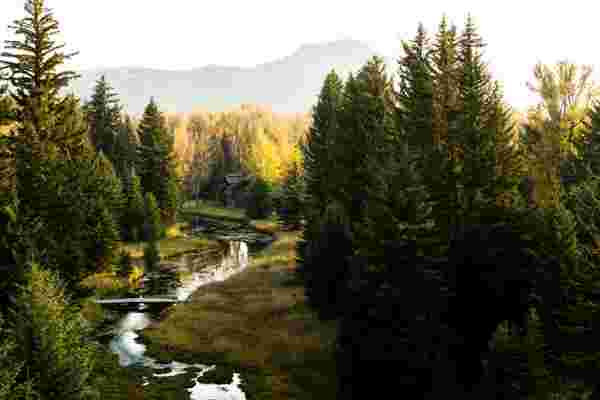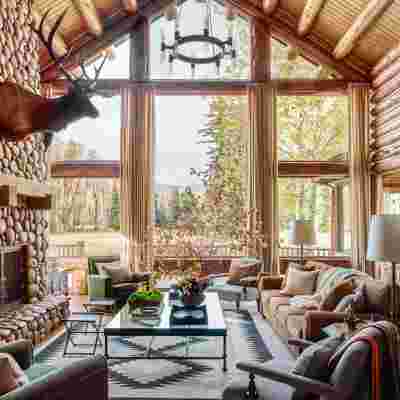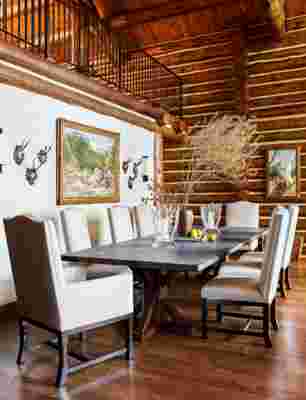Rush Jenkins and Klaus Baer remember the moment in Yellowstone National Park when they decided to abandon the big-city life in Manhattan. “We were driving a convertible, and it was a gorgeous day in May with snow-capped mountains everywhere,” recalls Jenkins, the former director of design at Sotheby’s New York and a cofounder of WRJ Design . “We turned to each other and were like, If we don’t do this now, when are we going to do this? So we made it happen.”
In the fall of that same year, the couple packed up their lives in New York City and moved west to Jackson, Wyoming. A few years later, a fellow New Yorker followed her husband back to his hometown. When that couple—who have three children—asked Jenkins and Baer to design a new 7,500-square-foot log home just outside Jackson, the affinities were clear from the start: There was a love of nature and an appreciation for the Wyoming vernacular, yes, but also a deep appreciation for the art world of their Manhattan days. Taken together, these seemingly disparate areas made the collaboration particularly exciting for Jenkins. “We connected a lot over the West,” Jenkins, who spent his childhood on a farm in southeastern Idaho, adds. “We also [bonded] over our understanding of and appreciation for fine arts, antiques, and history. All of that was a very common language.”
The 40-acre property near Jackson is steeped in local history: It was once part of a larger ranch owned by Clifford Hansen, a former 1960s governor of Wyoming dubbed the “cowboy governor” by the media thanks to his cattle ranching background. The traditional log house, renovated and expanded to include a new primary suite and kids’ wing by Berlin Architects , is surrounded by cottonwoods and aspens (the snow-capped Tetons are just beyond). Three creeks that run through the property are also filled with swans, geese, and 18-inch trout. From the enormous windows of the house, it’s not uncommon to spot bald eagles perching in trees and elk herds wandering by, along with the occasional resident bison, wolf, moose, or cougar.
“[The owner] said she wanted to have a home that honored the heritage of the region,” says Baer, who grew up in the North Georgia Mountains. “The other thing she wanted was to bring authenticity to the house, but in a modern way.”



Buy now for unlimited access and all of the benefits that only members get to experience.
As part of their vision to reimagine the classic log cabin, Jenkins and Baer brought the palette of the sky, mountains, and landscape into the warm-hued interiors. In the living room, cashmere drapes are a natural shade of cream, a suede sofa is a warm tone of brown, and the mohair chairs are muted green. Notably, the room’s rock fireplace was sourced directly from a local river. Metallic details—the handiwork of local craftspeople—can be found everywhere: In the iron accents of a coffee table, brass-and-bronze chandelier in the kitchen, and striking lattice-fronted bar. A light-filled, octagon-shaped solarium, designed for playing games, exudes a rustic-meets-modern aesthetic thanks to a tufted Chesterfield sofa and an end table made of petrified wood. Its elegant wood card table is by the late American designer Edward Wormley .
And yet, it’s the art on display that can’t help but often steal the natural-light spotlight. Throughout the house are pieces by Gerald Cassidy, Conrad Schwiering, and Edgar Payne. The collection’s American themes—landscapes emblematic of the surroundings, photographs of the ospreys common to the area—honor Wyoming’s innate wild beauty. Says Baer: “For us, it’s about creating interiors and homes that are in harmony with nature. And how we put those elements together so that the architecture and the interiors are of the place.”
